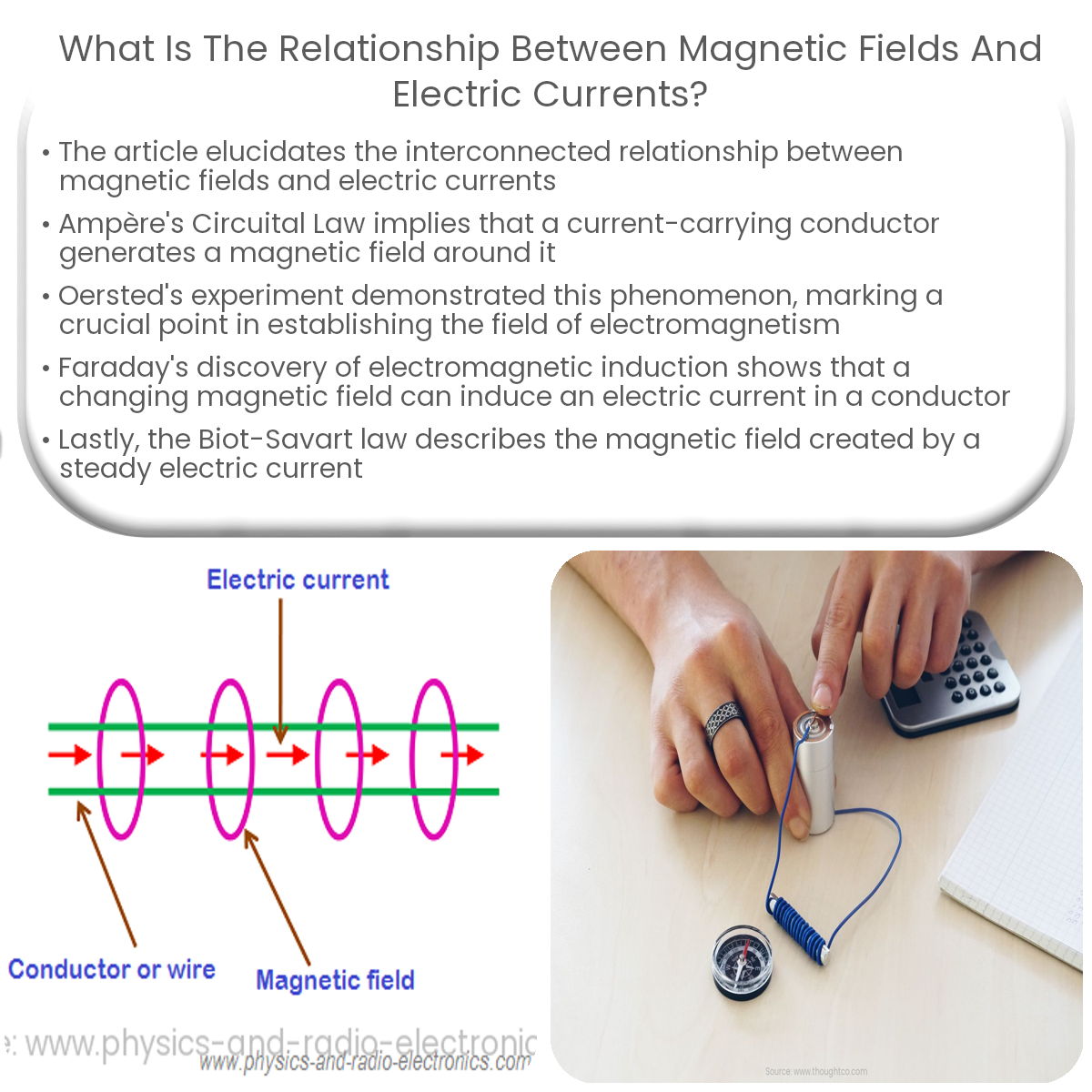Magnetic fields and electric currents are related as currents generate magnetic fields, and changing magnetic fields can induce electric currents.
The Relationship Between Magnetic Fields and Electric Currents
Magnetic fields and electric currents are interconnected phenomena that play a significant role in electromagnetism. Their relationship can be described through the following principles:
Ampère’s Circuital Law
Ampère’s circuital law states that the circulation of the magnetic field (B) around a closed loop is directly proportional to the net electric current (I) passing through the loop. Mathematically, it is represented as:
∮B • dl = μ₀I
Here, ‘μ₀’ is the permeability of free space, and ‘dl’ is the infinitesimal length element along the loop. This law highlights the fact that a current-carrying conductor generates a magnetic field around it.
Oersted’s Experiment
Hans Christian Oersted’s famous experiment demonstrated the relationship between magnetic fields and electric currents. He found that when an electric current passes through a conductor, it creates a magnetic field around it. This discovery was crucial in establishing the field of electromagnetism.
Electromagnetic Induction
Discovered by Michael Faraday, electromagnetic induction explains how a changing magnetic field can induce an electromotive force (EMF) and subsequently, an electric current in a conductor. Faraday’s law of electromagnetic induction states that:
ε = – dΦB/dt
Here, ‘ε’ is the induced EMF, ‘ΦB‘ is the magnetic flux, and ‘t’ is time. A negative sign indicates the direction of the induced EMF opposes the change in magnetic flux.
Biot-Savart Law
The Biot-Savart law describes the magnetic field generated by a steady electric current. It states that the magnetic field at a point is directly proportional to the product of the electric current and the length of the conductor, and inversely proportional to the square of the distance between the conductor and the point. The formula is:
dB = (μ₀Idl x r) / (4πr³)
Here, ‘dB’ is the infinitesimal magnetic field, ‘I’ is the current, ‘dl’ is the infinitesimal length element, and ‘r’ is the distance between the conductor and the point.
In summary, magnetic fields and electric currents share a close relationship. Electric currents generate magnetic fields, and changing magnetic fields can induce electric currents. These principles have laid the foundation for various applications in modern technology, including transformers, motors, and generators.


